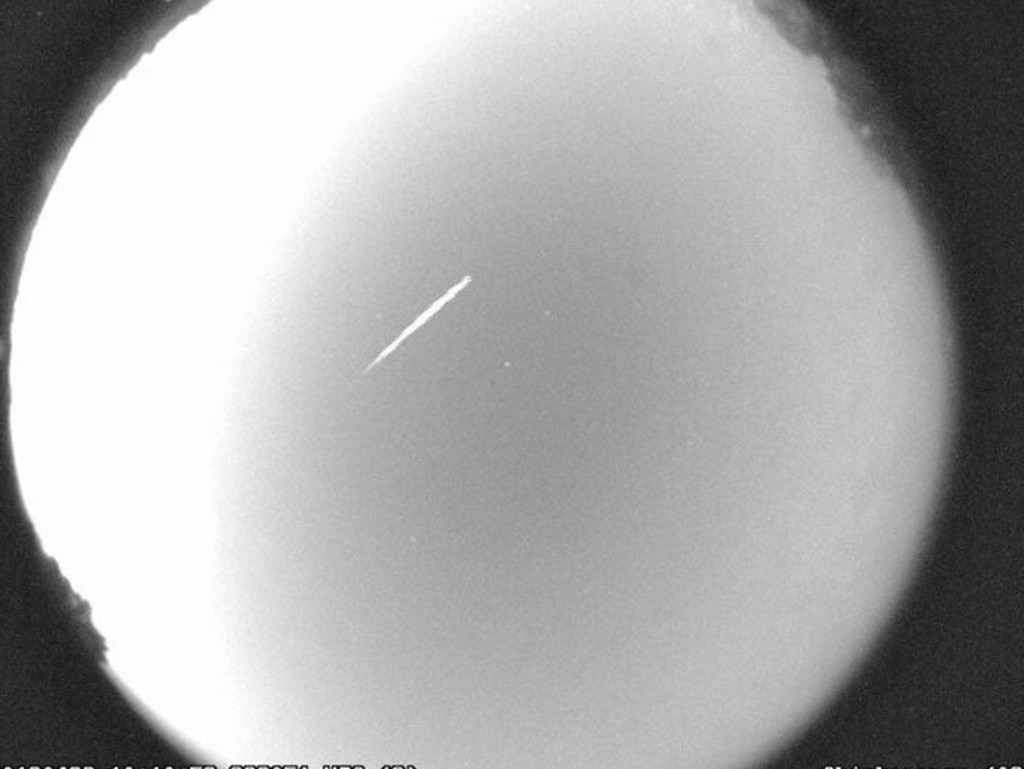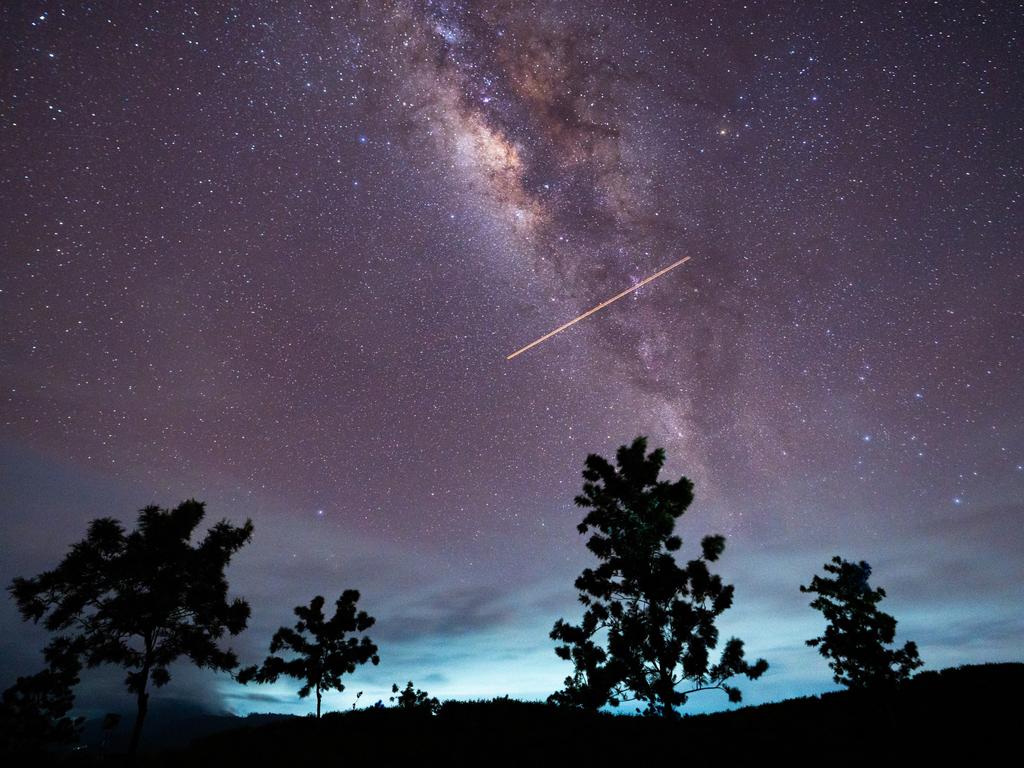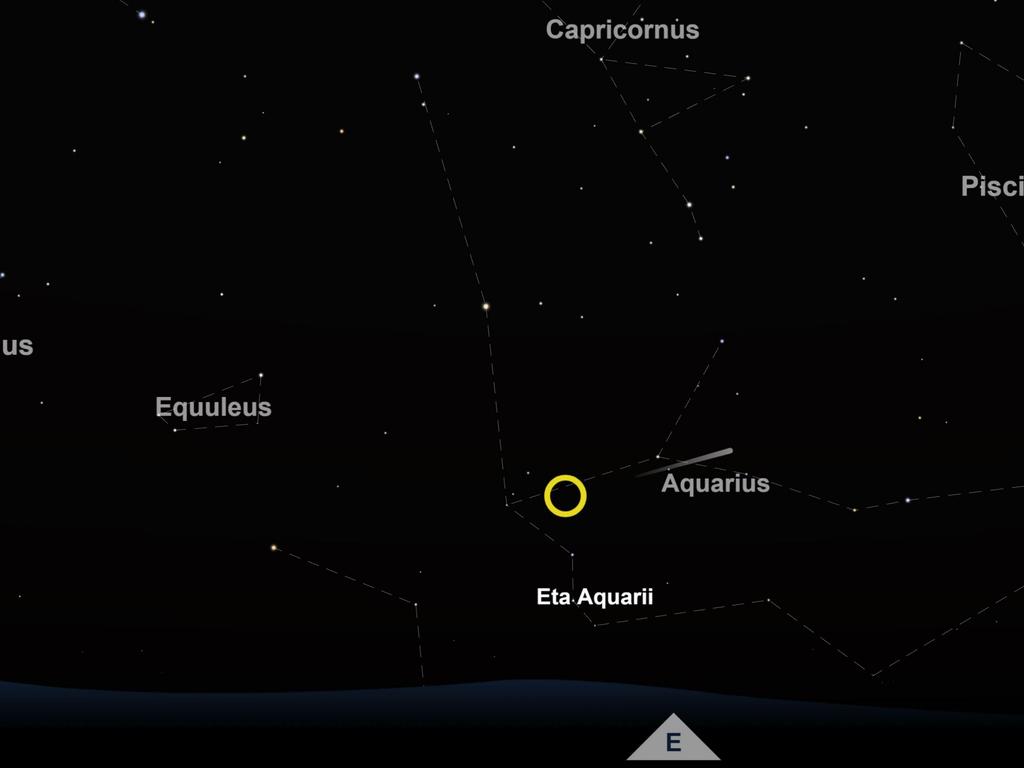How to see tomorrow’s ‘spectacular’ Eta Aquarids meteor shower
Millions of Aussies could get the chance to glimpse a dazzling sight as a meteor shower streaks through the night skies on Wednesday morning.
Millions of Australians could catch a glimpse of another epic meteor shower this week, with the Eta Aquarids meteor shower expected to light up the skies in the early hours of Wednesday morning.
The epic meteor shower, which occurs twice a year, is expected to peak between May 5 and 7, giving stargazers the chance to see up to 50 bright lights in the skies.
The meteor shower is one of two created from debris of Halley’s comet, one of the most famous periodic comets that makes an appearance every 75 years.
“As the comet passes around its orbit, small lumps of rock and material come off it and are sort of lifted around its orbit, and once a year the earth passes through that trail of material,” University of Sydney astronomer Tim Bedding told NewsWire.
While Halley’s comet will not be making a comeback until 2061, the debris that emerges from the direction of the constellation Aquarius occurs each year between April 21 and May 28.

When will the meteor be visible?
The eta Aquarid meteor shower will pass over the Australian skies “early in the morning” of Wednesday May 7, Professor Bedding says.
“We’re talking maybe (3am or 4am), before the sun starts to come up,” he told NewsWire.
Those who miss out on that chance to see the meteor shower will have another opportunity to catch a glimpse later in the week.
“The difference with this shower is it’s sort of spread over a few nights, so you don’t necessarily have to go on the night that I said,” he said.
“You could try to go one night before or after, and you might also see something.”

The meteor shower comes shortly after the Lyrid meteor shower created a bright blue light in the skies across the country, with residents from Bundaberg to Sydney catching a glimpse of the stunning sight.
However, unlike the Lyrid shower, the Eta Aquarids meteor comes from the direction of the Aquarius constellation and is one of the brighter astronomical sights to witness.
“Individual shooting stars, which are basically small pieces of rock and dust that go through the atmosphere, leave bright lines,” Professor Bedding said.
“The really bright ones are very spectacular and you see a bright thing.”
According to NASA, about 50 meteors can be seen during the peak of the Eta Aquarids, with roughly 10 observable under dark skies every hour.

How do I catch a glimpse?
In order to see the epic sights, Professor Bedding recommends rugging up in warm clothing and going to a secluded spot away from any light pollution in the early hours of the morning.
“Find a dark place away from city lights … and allow yourself time for your eyes to adapt to the darkness for a good 15-20 minutes,” he said.
“You want the sky to be dark. Fortunately, there’s no moon at that time of night, but you do need (the sky) to be clear.”
Stargazers are encouraged to find a comfortable spot – possibly with the help of a blanket or deck chair – and look “generally towards the east”.
“Hopefully, you’ll start to see some shooting stars more than normal in that direction,” Professor Bedding said.
Even with no moon and relatively clear skies, Professor Bedding said the night sky was still unpredictable.
“It’s hard to predict how good it will be,” he said.
“Sometimes these showers are amazing and you see hundreds and hundreds of them and other times you don’t, and that’s because it’s just hard to know exactly which part of the trail the earth is going through.”
If you miss the meteors this time around, residents will be able to catch another glimpse when the debris passes over our planet again in October.



